Article by Fr. Aristotle C. Dy, SJ, Xavier School President
Both campuses of Xavier School started the new school year on June 20 using the HyfleXS model. Enrollment in San Juan has reached 3,830 students, while Nuvali has 1,476.
Since the Department of Education required 1-meter distancing in the classroom when our school year started, less than 20 students in each class can report to school. They are called the Roomies. The rest of the class follows via Zoom (the Zoomies) using equipment that the school has installed in each classroom (big screen, microphone, camera, and speakers). In a few grade levels where a big number have chosen to remain online for the time being, students already report daily.
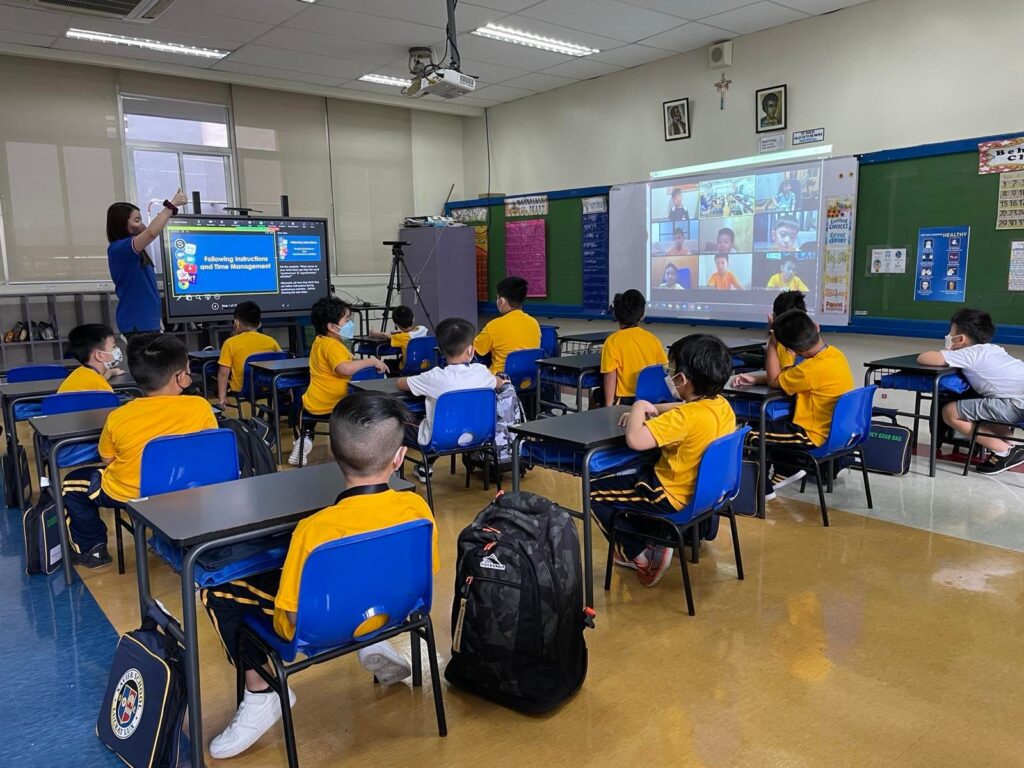
Under the HyfleXS model, onsite and online students learn together. The Roomies and Zoomies alternate every week in reporting to school, while those with special circumstances can also choose to be Zoomies for the whole first term (ending in Mid-September). Following the rules of the Department of Education, both vaccinated and unvaccinated students are allowed to attend classes in person. Vaccination, however, is highly encouraged.
After four weeks of trying out this model, what have we learned?
COVID PROTOCOLS
At the school gates, each student’s temperature is checked, then s/he taps in with their school ID, and also scans the QR code of their daily health declaration form. The faculty and staff do the same and this helps the school ensure that anyone with flu-like symptoms, or had Covid exposure, cannot report to school.
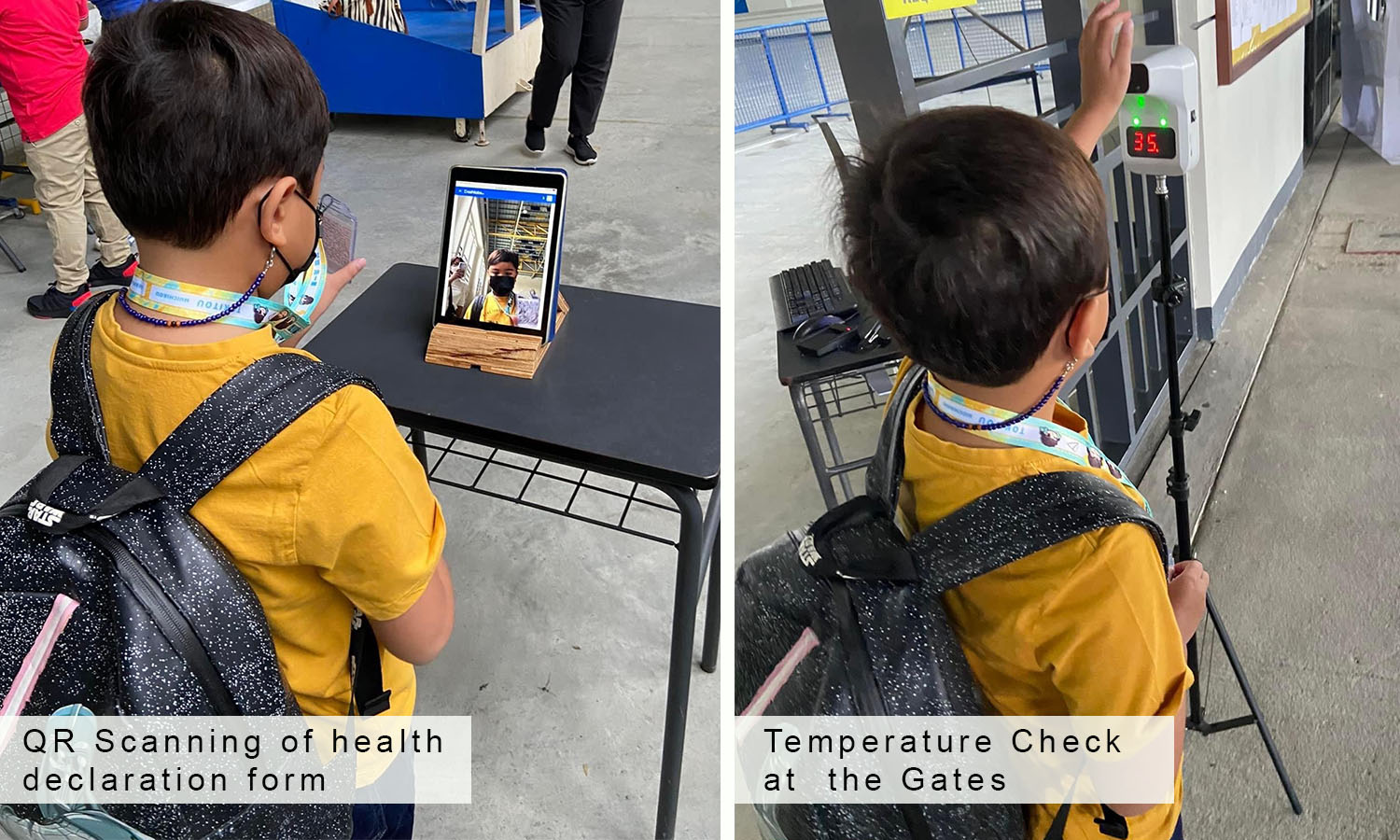
We have learned that putting such a system in place requires major follow-through. When parents report that a student has tested positive for Covid, has possible Covid symptoms, or has been exposed to a Covid+ person in their household or elsewhere, the school administration has to do due diligence and inform the class bubble where the student belongs. Following the latest guidance from the IATF and the US Centers for Disease Control, the affected group is asked to remain at home and shift to online schooling. They are also informed of the date when they may return to school. A Covid-negative test is not required after the prescribed number of days has been observed. This varies for the vaccinated and the unvaccinated.
We have also learned that our protocols presume the honesty and goodwill of all stakeholders, specially parents when they fill out the daily health declaration form. We have experienced sending students home because they exhibited symptoms that were already present when they entered the school gates.
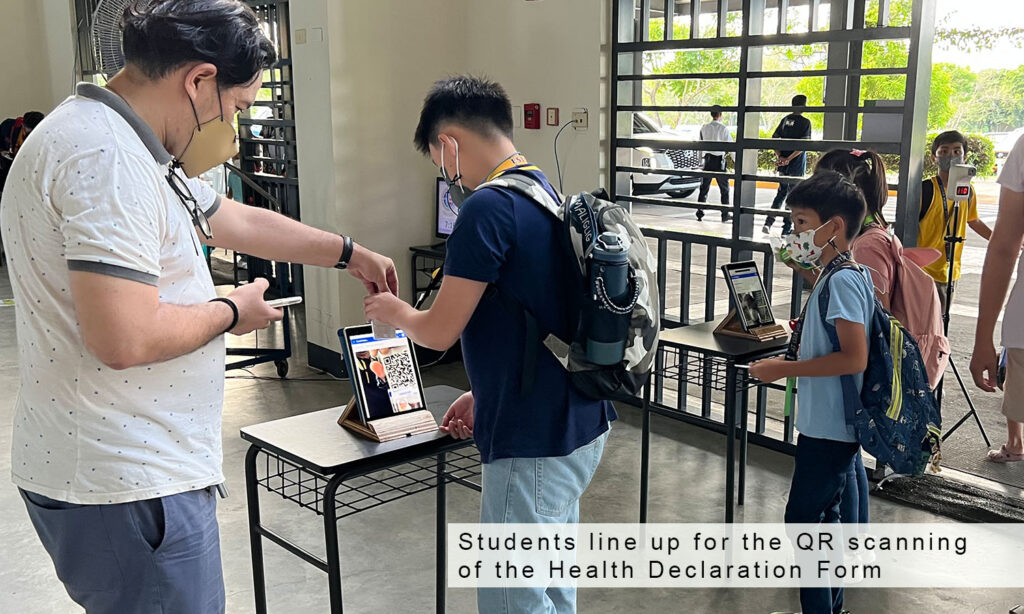
The alternating weekly schedule of Roomies and Zoomies turned out to be helpful when it came to observing isolation periods. When reports are made from Thursday onwards, the Roomie group is approaching their online schedule anyway, so staying home is not so disruptive. When information comes in the first days of the week, then the shift to online learning happens sooner and results in a longer disruption to the alternating weekly schedule.
In the first four weeks of school, Xavier recorded 54 (GS 36 + HS 18, 1.4% of the student population) reported Covid+ student cases in San Juan and 8 in Nuvali (GS 6 + HS 2, 0.5% of population). These were largely due to household transmission and was more prevalent in grade school where there are more unvaccinated children.
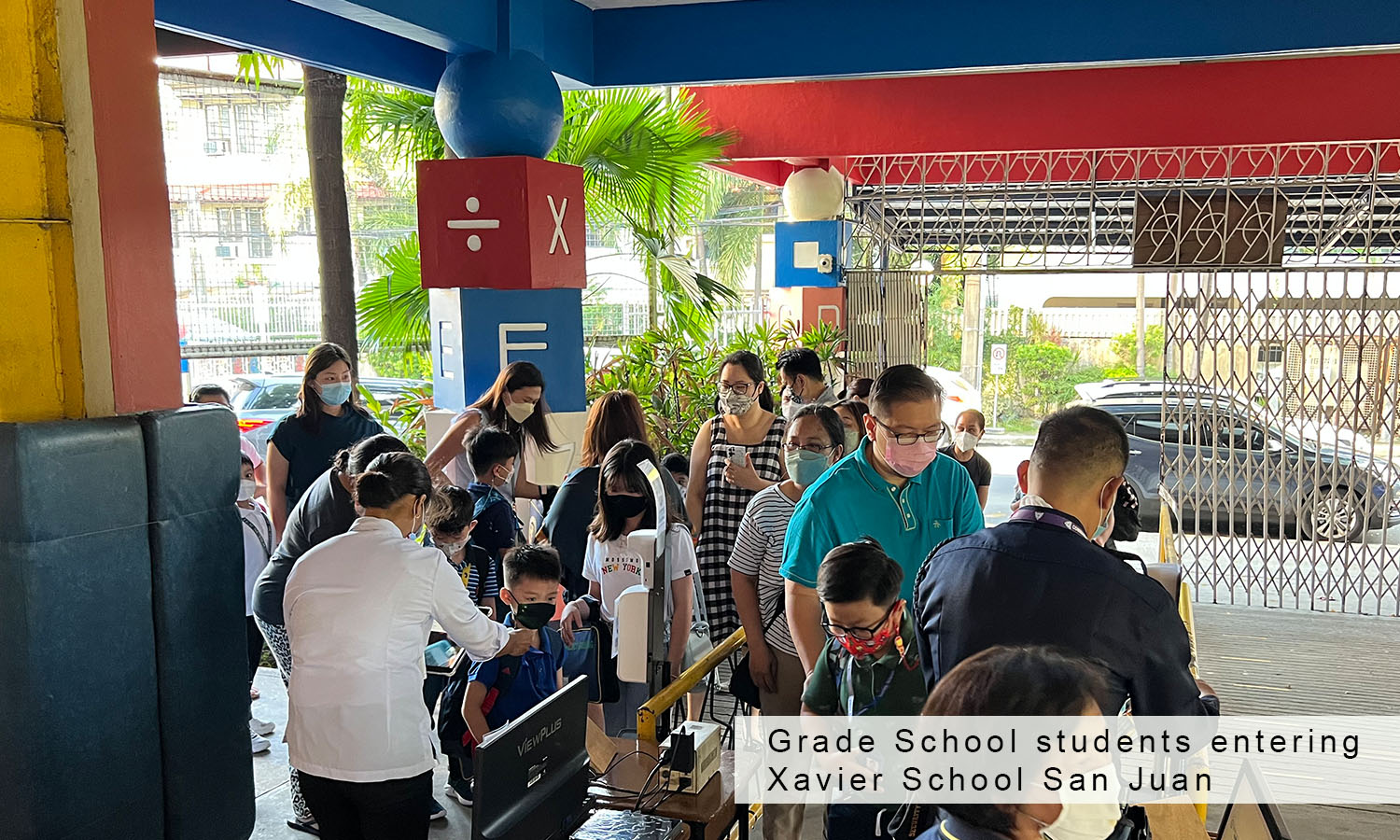
The respective classes of Covid+ students were informed and isolation days adjusted accordingly, including for those who may have had direct exposure to them. There has been no sense of panic as people adjusted to this new situation of having mild infections.
A far bigger number of students, 346 (GS 229 + HS 117, 9% of the population) in San Juan and 119 (8% of population) in Nuvali, reported flu-like symptoms and were asked to stay home. Though many of these were possibly cases of allergic rhinitis or the common cold, the students were asked to stay home anyway.
The work of contact tracing and informing affected bubbles is a major undertaking that needs to be carried out on top of the usual administrative duties. The school administration recognizes this in assessing the workload of personnel.
On the whole, mask-wearing is strictly observed in the school setting, even during PE classes. Distancing, however, can only be strictly enforced in the formal classroom setting. It has to be recognized that during breaks, and at the beginning and end of the day, students interact freely and it is not feasible to keep calling their attention. It helps, however, that these interactions most often happen in open spaces outside the classroom.
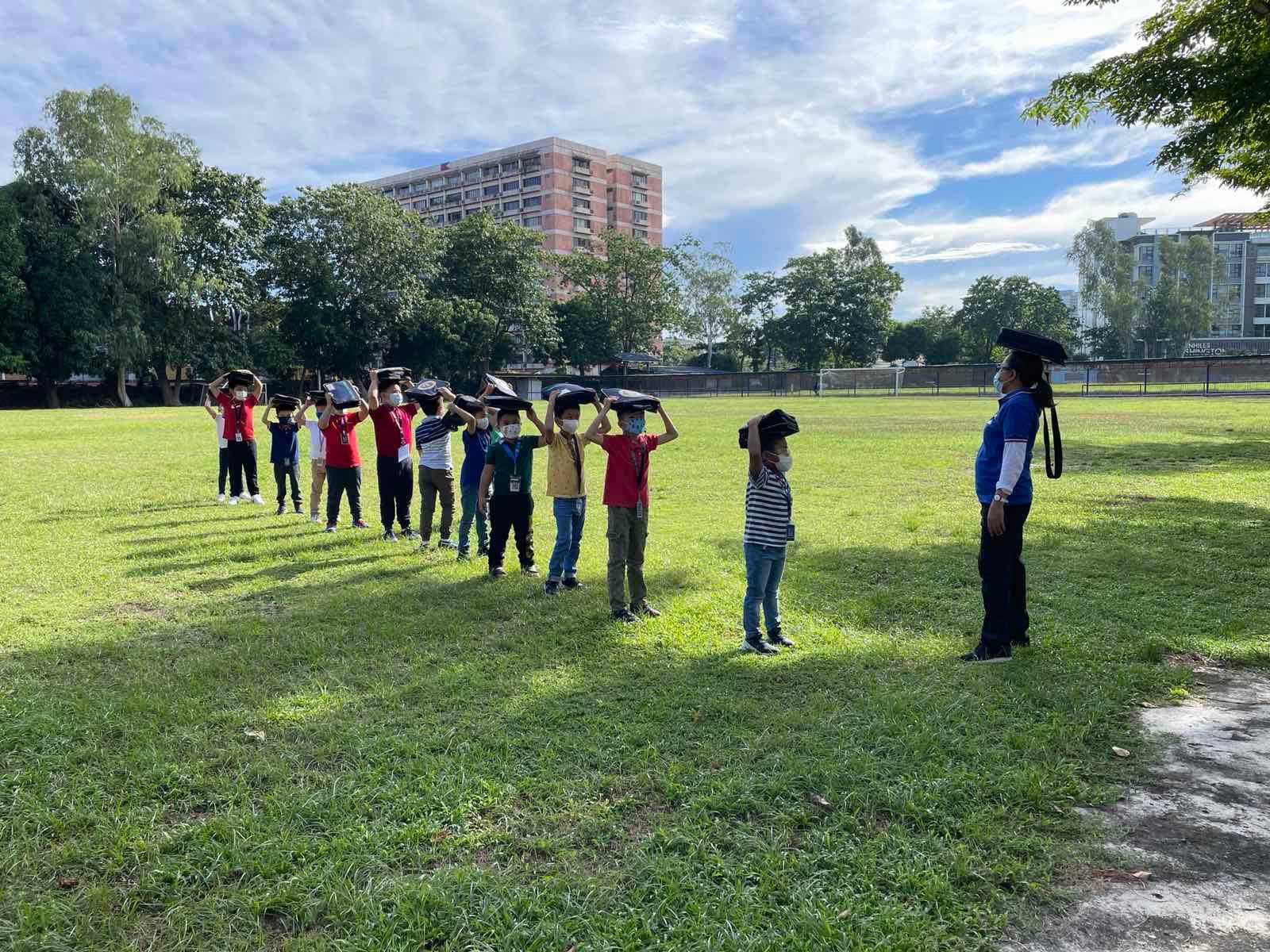
In the classroom, much effort has been exerted to ensure proper ventilation. Aside from the air purifier inside the room, one door and one window are kept partially open to provide air flow. This makes the air-conditioning unit work harder, but ventilation and a comfortable temperature need to go together as a safety protocol.
ADULT BEHAVIOR IN SCHOOL
Similar protocols are in place for monitoring the health status of faculty and staff. When a teacher needs to stay home, but is well enough to continue teaching, s/he can do so while another adult is assigned to be in the room to supervise the onsite students.
The hyflex model requires teachers and formators to multi-task all the time, and this has to be recognized by the school administration. Adults also have to be role models in observing the protocols themselves. When a school employee needs to stay home, the rest of their team has to cover for them; but it can happen too that the rest of the team has been exposed to them and need to stay home. This presents staffing challenges, and we try our best to “keep calm and carry on.”
EATING IN SCHOOL
We observed that most students bring their own food to school, but the older ones also buy food from the canteen using a cashless system. We’ve learned that seating arrangement can still be improved, so that students do not face each other whether directly or diagonally while at their dining tables. This is also the recommendation in the latest DepEd order.
School employees have been enjoined not to eat together, but we’ve learned that frequent reminders are helpful because Filipinos are highly sociable.
OVERALL LEARNING EXPERIENCE
Despite having so many variables to manage, initial feedback from parents is that teachers are able to teach well and manage both the Roomies and the Zoomies. The latter are able to participate well on days when they are assigned to be online. The parents greatly appreciate the school’s attention to health protocols so that students can transition back to in-person learning.
The Department of Education has mandated the full return to in-person classes by early November. Some details still need to be clarified to address the legitimate concerns of some parents who have valid reasons for choosing the online option, but on the whole, having the majority of students back in onsite school is a positive development that has taken too long to be implemented in our country. It will actually ease the burden of teachers who are now on their third year of trying to facilitate learning in less than ideal circumstances. Having most students back in the classroom minimizes the need for managing students who for whatever reason, can only participate in the online modality.
We have learned much from online schooling in the last two years. We see the hybrid or hyflex models as necessary options in the future of education, so that the best of online schooling can complement in-person learning. While the ideal default modality in basic education is still onsite school, our online day every week has proven to be a welcome respite from the weekday morning rush, specially given the increasing cost of transportation.
The readiness to shift schooling online at any time is also an essential component of disaster preparedness, for example, when public health requires periods of lockdown to slow down the spread of infections.
As soon as the DepEd lifts the requirement of physical distancing, we will give parents the option to send their children to school for four days every week.
By sharing our experience after one month of hyflex learning, Xavier School hopes to contribute to the wider national conversation on safely bringing students back to physical school.






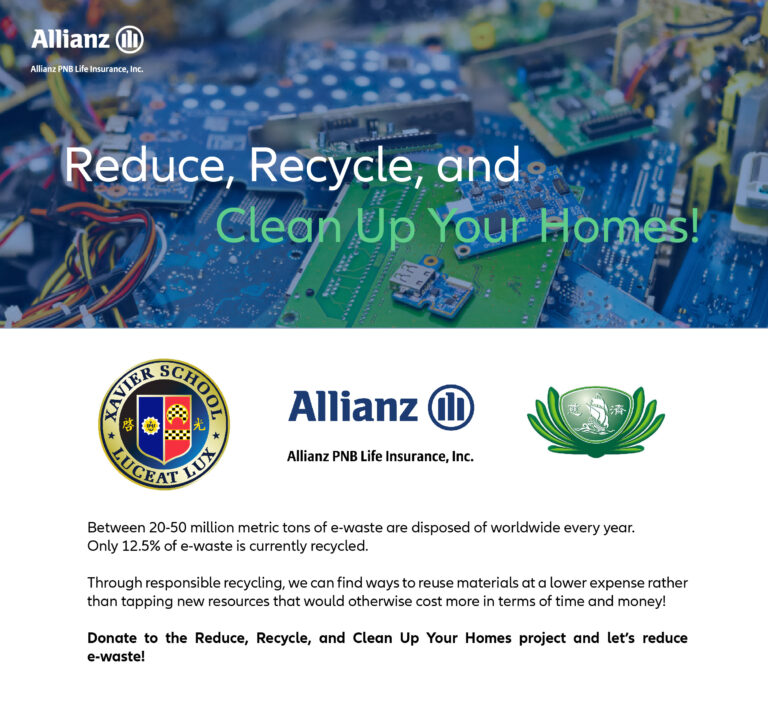
This Post Has 8 Comments
Congratulations to our Xavier School heroes! Your light shines bright for our families and our country. God bless.
Thank you for this insightful article, Fr. Dy. This piece gives me a glimpse of how the faculty and staff of Xavier School managed the day-to-day rigors of HyfleXS learning while juggling it in ensuring the safety of the learners while they are on the school premises. Your school’s best practices are admirable and, truth be told, can be a longshot if to be translated into the realities of the public school setting but I am hopeful that we can also pull through.
your hyfleXS model is a very interesting innovation. should the high school of my son here in avondale, az be in a precarious situation later, i would suggest your model to the dominican sisters who run st. john paul ii high school. i am an xs68 alum. thank you and luceat lux.
Thank you for sharing.
Good job Xavier School…face to face learning is still the best for both students and teachers. I commend your institution for allowing kids to at least have few days of actual class..it is good for their mental and social well being
This hyflex modality can also apply effectively in the tertiary level.
Despite and inspite of COVID situation, the quality of learning of our students must not be compromised, and this therefore, challenges all educational institutions whether basic education, tertiary, or graduate levels to continuously innovate learning systems that are both affordable and accessible to all stakeholders. Congratulations to Xavier School for sharing this experience!
Thank you for sharing your experience. This will help other schools strategize based on their own context. God bless your school.
Thank you for sharing your experience. This will help other schools strategize based on their own context. God bless your school.